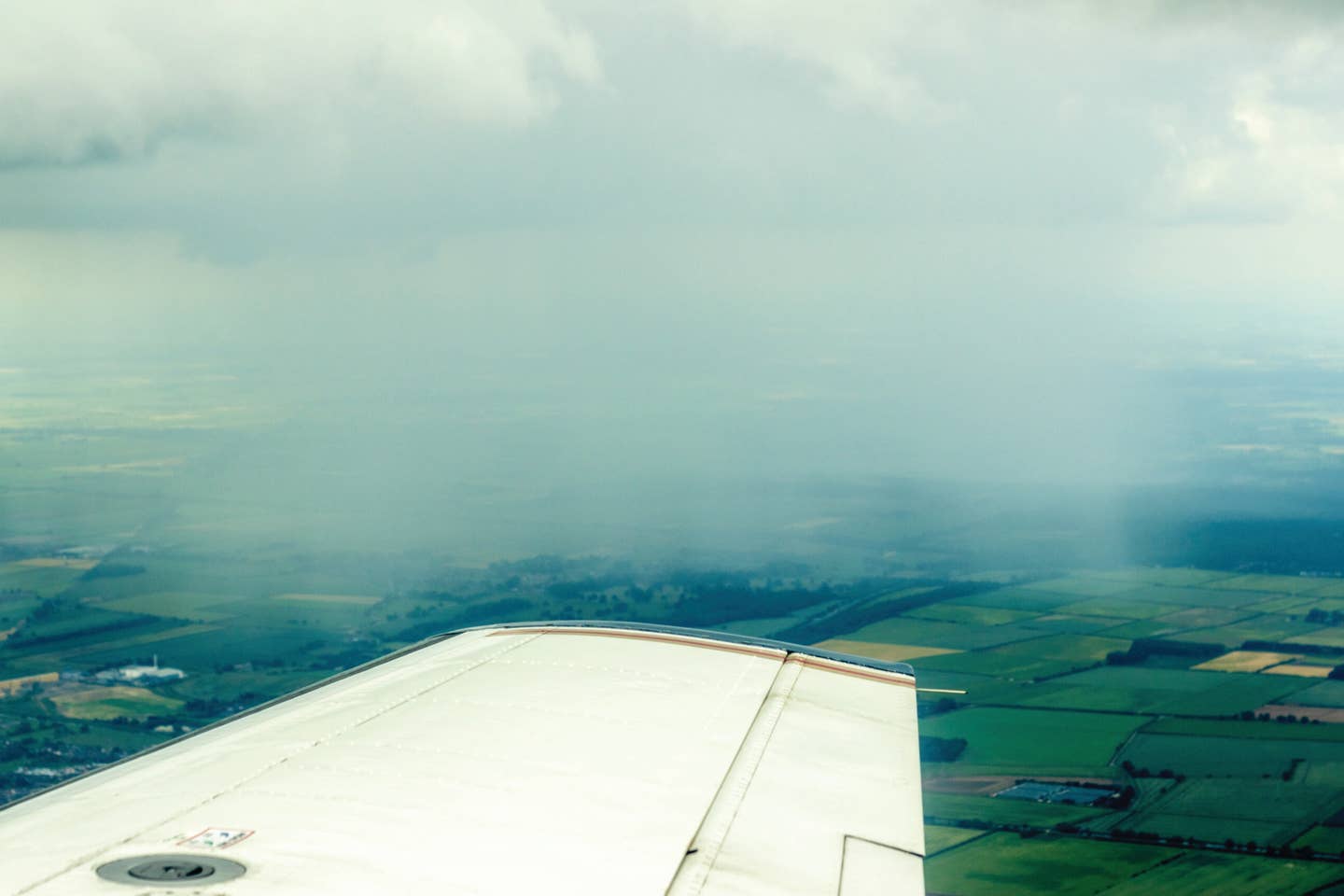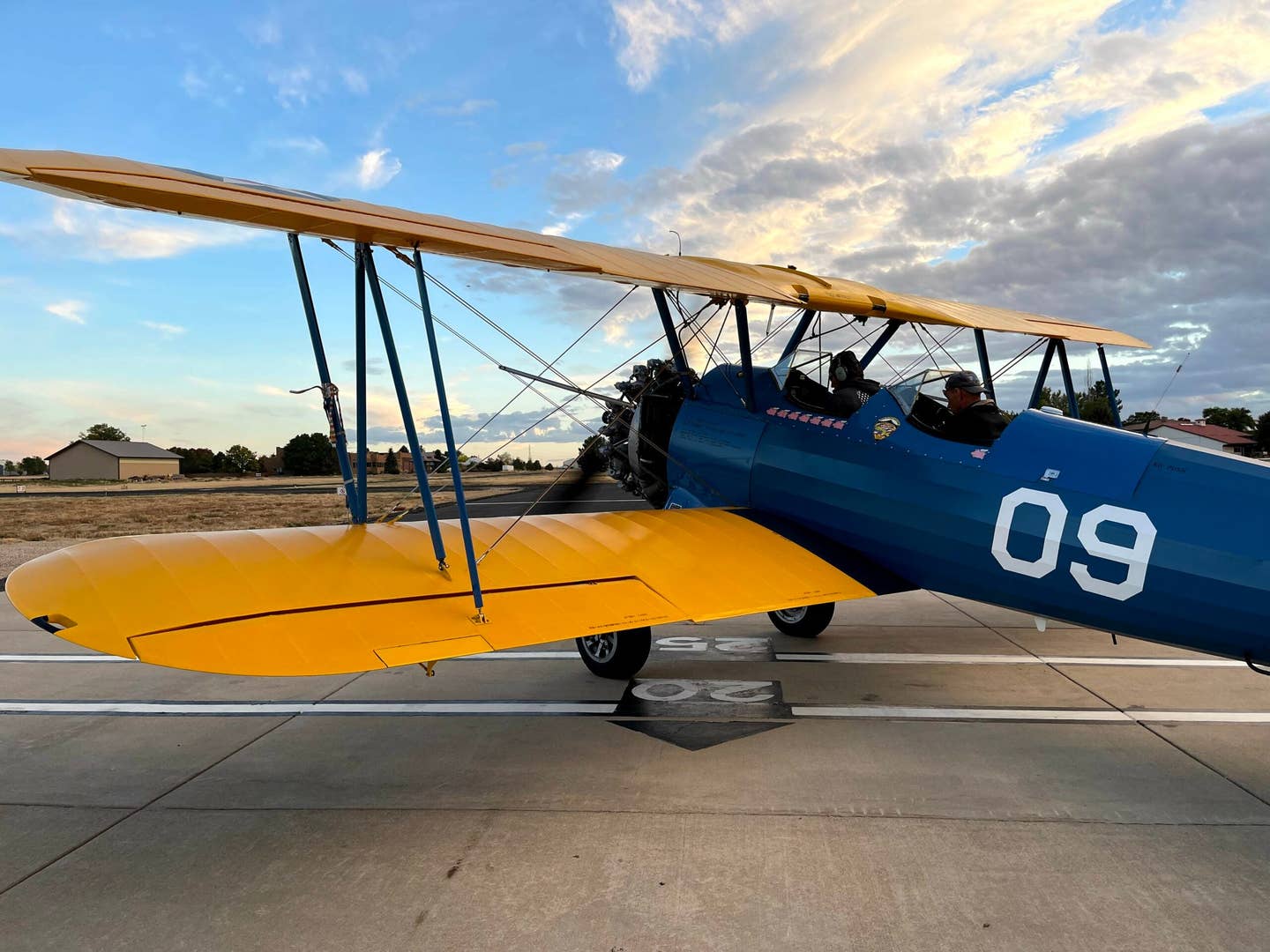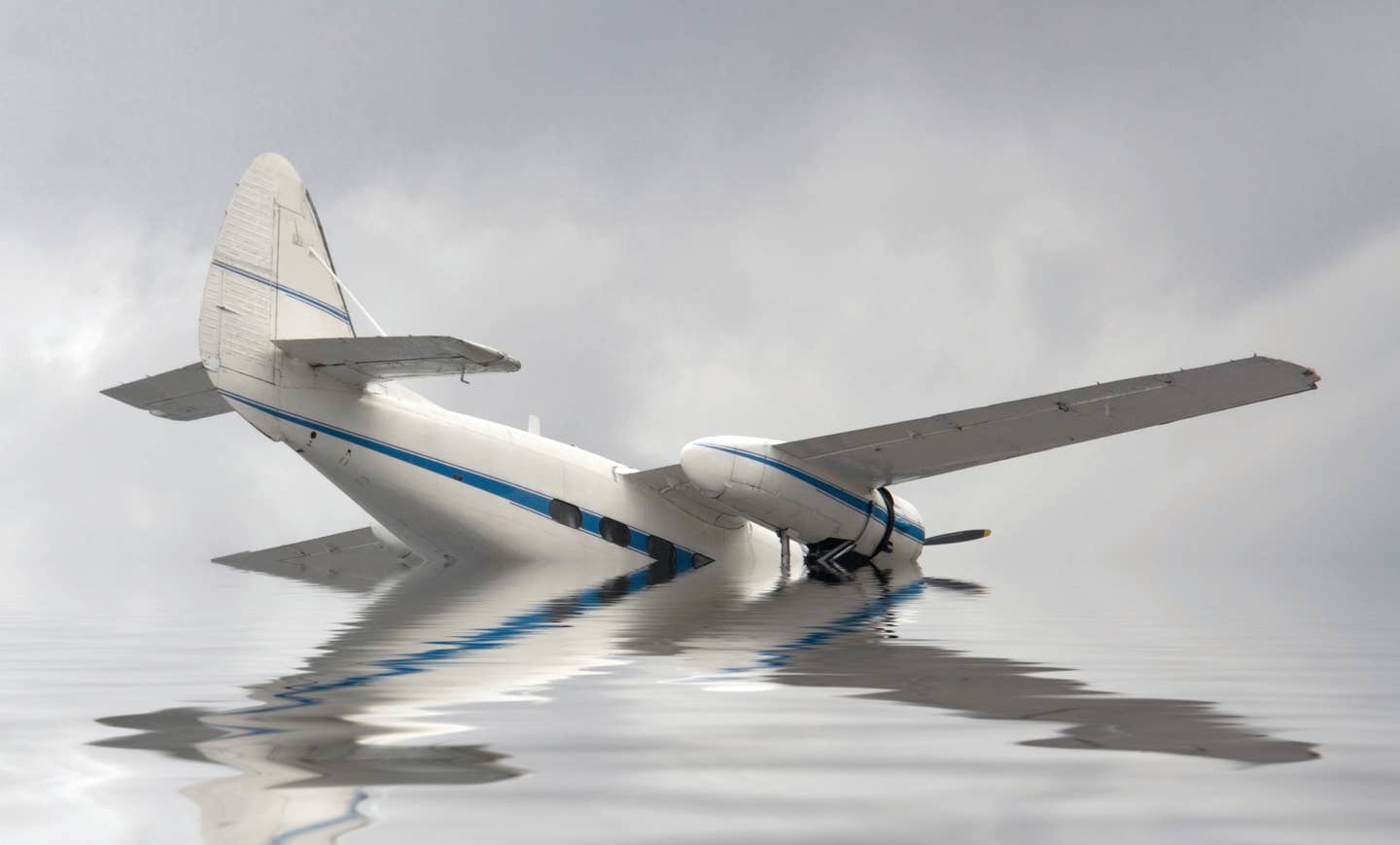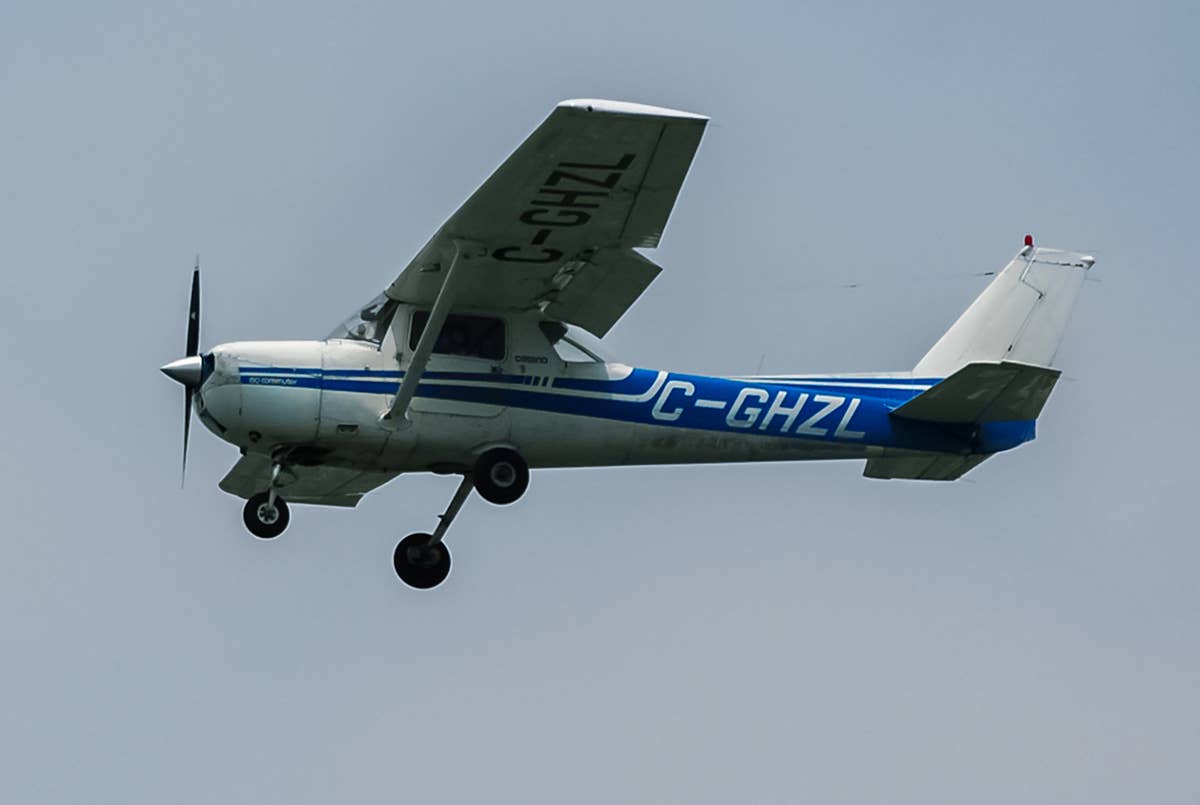How to Wrap Your Head Around Weather
Pilots may find weather to be one of the most challenging subjects but also the most intriguing.

If you are a student pilot, there are some tips that will help you achieve a good
foundation with respect to weather. [iStock]
I was cruising through my early 40s and itching to learn something new. As a fellow engineer at
Northrop Grumman, I needed something that would challenge my mind, body, and spirit. There were two options on the table. I had just graduated with my master’s degree and was seriously thinking of taking the next leap of faith and earning a doctorate.
But that was quickly overshadowed by my second option—my childhood dream of learning to fly. And I wasn’t disappointed. It did challenge my mind, body, and spirit every step of the way.
If you're not already a subscriber, what are you waiting for? Subscribe today to get the issue as soon as it is released in either Print or Digital formats.
Subscribe NowWhat intrigued me the most about learning to fly was that it required mastering many disciplines. In other words, it’s more than just jumping into an airplane and learning stick-and-rudder skills. You have to become entrenched in subjects such as aerodynamics, radio navigation, geography, radio communications, airspace, map reading, legal, medical, and my favorite discipline, meteorology.
Despite my background as a research meteorologist, my aviation weather background was limited when I was a student pilot. So, I was very excited to discover what more I might learn about weather in addition to all of these other disciplines. If you are a student pilot, here are some tips that will help you achieve a good foundation with respect to weather.
It Isn’t Easy
First and foremost, weather is inherently difficult. It’s likely the most difficult discipline to master because of the uncertainty and complexity it brings to the table. Therefore, strive to understand what basic weather reports and forecasts the FAA effectively requires that you examine before every flight. It certainly doesn’t hide it. It’s a fairly short and succinct list that’s all documented in the new Aviation Weather Handbook (FAA-H-8083-28) and the Aeronautical Information Manual (AIM). Ultimately, knowing the nuts and bolts of this official weather guidance will help with your knowledge and practical tests and give you a head start once the ink is dry on your private pilot certificate.
Second, as a student pilot, plan to get your weather guidance from a single and reliable source. Try not to bounce around using multiple sites or apps. There are literally hundreds, if not thousands, of websites and apps that will deliver weather guidance to your fingertips such that you can become overwhelmed with all of the choices, and entropy quickly takes over. Besides, flight instructors love to show off their unique collection of weather apps on their iPhone. Sticking with the official subset of weather guidance will allow you to focus on what matters the most.
Once you receive your private certificate, then you can expand the weather guidance you use to include other websites and apps.
The two internet sources that should be at the top of your list include the Aviation Weather Center (aviationweather.gov) and Leidos (1800wxbrief.com). Both of these sites provide the essential weather guidance needed to make a preflight weather decision. Using one or both of these sites will help focus you on the official weather guidance the FAA demands you use.
Categorize Your Data
Third, when you look at the latest weather guidance, take a minute and characterize each product. It should fall into one of three categories: observational data, advisories, or forecasts. Knowing its category will tell you how to properly utilize that guidance. For example, if you come across a visible satellite image, that’s an example of observational data.
Observational data is always valid in the past and typically comes from sensors. What about a ground-based radar mosaic (e.g., NEXRAD)? That’s also an observation. Pilot weather reports (PIREPs) and routine surface observations (METARs) are also considered observational data. While not a pure observation, the latest surface analysis chart that is valid in the recent past will identify the major players driving the current weather systems.
Observations are like the foundation when building a house. All other weather guidance you use will build on that foundation. A sturdy and well-built foundation is the key to a good preflight weather briefing. You can’t know where the weather is going until you know where it has been. Identifying the latest trends in the weather through the use of these observations is the cornerstone of this foundation. When possible, looping the guidance over time will expose these trends. Is the weather moving or stagnant? Is it strengthening or weakening over time?
Advisories such as the initial graphical AIRMETs (G-AIRMETs) snapshot, SIGMETs, and center weather advisories (CWAs) are the front lines of aviation weather. They are designed to highlight the current location of the truly ugly weather. Advisories build the structure that sits atop of this foundation. Essentially, these advisories summarize the observational data by organizing it into distinct hazards and areas of adverse weather to be avoided.
Forecasts are the springboard for how these observations and advisories will evolve over time. You can think of forecasts as the elements that protect the finished house, such as paint, shingles, and waterproofing. This also includes the alarm and surveillance system to alert you to the possible adverse weather scenarios that may occur during your flight. While forecasts are imperfect, they are still incredibly useful. Forecasts include terminal aerodrome forecasts (TAFs), convective outlooks, prog charts, and the remaining four snapshots for G-AIRMETs.
Dive into the Details…
Fourth, details matter quite a bit. Look at the guidance and identify what stands out. Don’t make a decision too early. Instead, carefully observe and gather facts. Is the precipitation occurring along the route limiting the ceiling and/or visibility? Is the precipitation expected to be showery? This is a clear indication of a convective process in place.
Are the surface observations reporting two or three mid- or low-level cloud layers? Again, this is another indication of a convective environment. This can be especially important to identify, especially when there’s a risk of thunderstorms that have yet to form.
…But Fall Back on the Big Picture
Fifth, get a sense of the big weather picture. This is likely the most difficult aspect of learning how to truly read the weather. Think about the big weather picture as the blueprint for building an entire community. It’s what brings everything together. When I do my own preflight briefings, my decisions are largely driven by what’s happening at that synoptic level.
Lastly, read, read, and read some more. Focus mostly on the weather guidance and less on weather theory. These are the specific weather products mentioned earlier. Weather theory is something you can tackle at a later time. The FAA’s Aviation Weather Handbook is a great start. You can download a PDF document for free from the agency website and add this to your online library. This was issued in 2022 to consolidate the weather information from six FAA advisory circulars (ACs) into one source document. My book, Pilot Weather: From Solo to the Airlines, was published in 2018 and is written for pilots at all experience levels in their journey to learn more about weather.
If you fly enough, you will eventually find yourself in challenging weather. The goal of any preflight weather briefing is to limit your exposure to adverse conditions, and that takes resources and time. Once you’ve mastered the weather guidance, then giving Flight Service a call at 1-800-WXBRIEF will allow you to sound like a true professional.
Yes, I eventually did earn that doctorate, but I am really happy that I took the step over 25 years ago to learn to fly. One guarantee with weather: You can never learn enough. I am still learning today.
This column first appeared in the March 2024/Issue 946 of FLYING’s print edition.

Subscribe to Our Newsletter
Get the latest FLYING stories delivered directly to your inbox







